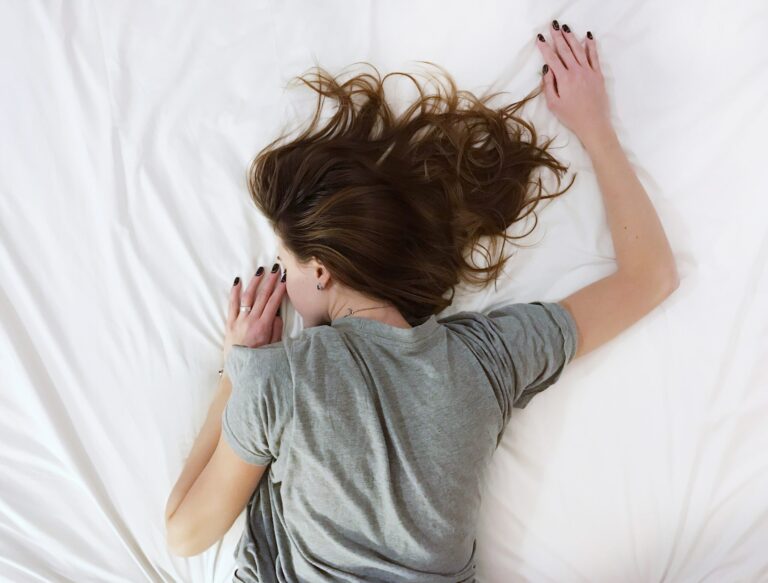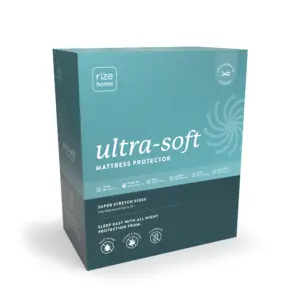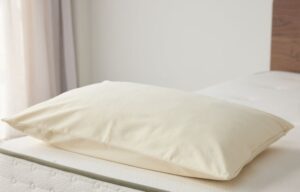
What Are Peer Reviewed Studies on Sleep and Why are the Important and More Credible?
Peer-reviewed studies are scientific articles that have undergone a rigorous evaluation process by experts in the same field before being accepted for publication in a scholarly journal. This process, known as peer review, helps ensure that the research presented is of high quality and adheres to established scientific standards.
Peer-reviewed studies are important for several reasons:
Quality Control: The peer-review process acts as a quality control mechanism, ensuring that the research is methodologically sound, the results are valid, and the conclusions are supported by the evidence. This helps maintain the overall quality and integrity of scientific literature.
Validation and Reproducibility: Peer review helps validate the research findings by allowing other experts to examine and critique the study. This scrutiny helps ensure that the results are reliable, consistent, and reproducible, which is crucial for building a solid foundation of scientific knowledge.
Credibility and Authority: Studies that have undergone peer review are generally considered more credible and authoritative than non-peer-reviewed research, as they have been thoroughly vetted by other experts in the field. This lends greater weight to the findings and conclusions of the study.
Improvement and Feedback: The peer-review process often provides valuable feedback to researchers, allowing them to improve their work and address any weaknesses or limitations before the study is published. This helps ensure that the final published version is as accurate and complete as possible.
Dissemination of Knowledge: Peer-reviewed studies contribute to the dissemination of scientific knowledge, as they are often published in reputable journals with wide readership. This enables other researchers, professionals, and policymakers to access and build upon the latest findings in their respective fields.
In summary, peer-reviewed studies play a critical role in maintaining the quality, credibility, and advancement of scientific research. They provide a rigorous evaluation process that ensures the reliability and validity of scientific findings, ultimately contributing to the collective body of knowledge in a particular field.
- Jacobson, B. H., Boolani, A., & Smith, D. B. (2019). Changes in low back pain in a long-term use of an adjustable air bed sleep system: A 2-year randomized controlled trial. Journal of Chiropractic Medicine, 18(3), 184-190.
Summary: This study investigated the effects of using an adjustable air bed sleep system on low back pain (LBP) in a randomized controlled trial. The participants were assigned to either an air bed or a control group, and their LBP was assessed over a two-year period. The results showed a significant reduction in LBP in the air bed group compared to the control group, suggesting that the adjustable air bed sleep system may be beneficial for individuals with chronic LBP.
- Radwan, A., Fess, P., James, D., Murphy, J., Myers, J., Rooney, M., … & Teyhen, D. (2015). Effect of different mattress designs on promoting sleep quality, pain reduction, and spinal alignment in adults with or without back pain; systematic review of controlled trials. Sleep Health, 1(4), 257-267.
- Summary: This systematic review evaluated the effect of different mattress designs on sleep quality, pain reduction, and spinal alignment in adults with and without back pain. The authors analyzed 10 controlled trials and found that medium-firm mattresses could provide better comfort, sleep quality, and spinal alignment. However, they also concluded that further research is needed to determine the optimal mattress design for individuals with specific health issues or sleep preferences.
- Kovacs, F. M., Abraira, V., Peña, A., Martín-Rodríguez, J. G., Sánchez-Vera, M., Ferrer, E., … & Muriel, A. (2003). Effect of firmness of mattress on chronic non-specific low-back pain: Randomised, double-blind, controlled, multicentre trial. The Lancet, 362(9396), 1599-1604.
Summary: This randomized, double-blind, controlled trial studied the effects of mattress firmness on chronic non-specific low back pain. Participants were assigned to either a firm or medium-firm mattress group. The results demonstrated that a medium-firm mattress significantly reduced pain and disability compared to a firm mattress, indicating that mattress firmness plays a crucial role in managing low back pain.
- Panagiotis, K., Panagiotis, S., & George, K. (2018). The role of mattress and pillow in promoting quality of sleep and relieving insomnia in adults: A systematic review of the literature. Sleep Science and Practice, 2(1), 5.
Summary: This systematic review examined the impact of mattress and pillow characteristics on sleep quality and insomnia in adults. The authors found that mattresses and pillows with appropriate firmness, support, and comfort can lead to improved sleep quality and reduced insomnia symptoms. However, they also noted that individual preferences and needs should be taken into consideration when selecting sleep products.
- Jacobson, B. H., Gemmell, H. A., Hayes, B. M., & Altena, T. S. (2008). Effectiveness of a selected bedding system on quality of sleep, low back pain, shoulder pain, and spine stiffness. Journal of Manipulative and Physiological Therapeutics, 31(2), 128-134.
Summary: This study investigated the effectiveness of a selected bedding system on sleep quality, low back pain, shoulder pain, and spine stiffness. Participants were assigned to either a new bedding system or a control group using their existing bedding. Results showed significant improvements in sleep quality, reduced pain, and decreased stiffness for the new bedding system group, suggesting the importance of proper bedding in promoting overall sleep health.
- Verhaert, V., Haex, B., De Wilde, T., Berckmans, D., Vandekerckhove, M., & Verbraecken, J. (2011). Ergonomics in bed design: The effect of spinal alignment on sleep parameters. Ergonomics, 54(2), 169-178.
- Summary: This study examined the impact of spinal alignment on sleep parameters, aiming to provide insights for bed design. The authors found that appropriate spinal alignment during sleep positively influenced sleep quality and reduced awakenings. This study highlights the importance of considering spinal alignment in bed design to enhance overall sleep quality.
- Okamoto-Mizuno, K., & Mizuno, K. (2012). Effects of thermal environment on sleep and circadian rhythm. Journal of Physiological Anthropology, 31(1), 14.
Summary: This review paper investigates the effects of the thermal environment on sleep and circadian rhythm. Although not specifically focused on mattresses, the authors discuss the importance of heat and moisture regulation in bedding materials to promote sleep quality. The paper emphasizes that an optimal thermal environment is essential for a restful sleep and maintaining a healthy circadian rhythm.
- Shah, N., & Taylor, D. (2018). The relationship between sleep posture and the intensity of self-reported pain. Journal of Physical Therapy Science, 30(10), 1327-1331.
Summary: This study explored the association between sleep posture and self-reported pain intensity. The authors found that specific sleep postures, such as sleeping on the side, might be linked to lower pain intensity. While this study is not focused solely on mattresses, it highlights the importance of sleep surfaces that accommodate and support different sleep postures to minimize pain and discomfort.
- Bertolazi, A. N., Fagondes, S. C., Hoff, L. S., Dartora, E. G., da Silva Miozzo, I. C., de Barba, M. E. F., & Barreto, S. S. M. (2011). Validation of the Brazilian Portuguese version of the Pittsburgh Sleep Quality Index. Sleep Medicine, 12(1), 70-75.
Summary: This study aimed to validate the Brazilian Portuguese version of the Pittsburgh Sleep Quality Index (PSQI). The PSQI is a widely used questionnaire for assessing sleep quality, and its validation in different languages and cultural contexts can be helpful in investigating the impact of various factors, including mattresses, on sleep quality across diverse populations.
- Peker, K., Bermek, G., & Esgi, N. (2012). Relationship among sleep positions and quality of sleep and life. Sleep and Biological Rhythms, 10(4), 234-240.
Summary: This study examined the relationship between sleep positions and sleep quality, as well as quality of life. The authors found that certain sleep positions, such as the lateral (side) position, were associated with better sleep quality and quality of life. The study underscores the importance of sleep surfaces that support various sleep positions for improved sleep quality and overall well-being.
- Jacobson, B. H., Wallace, T. J., & Smith, D. B. (2006). Grouped comparisons of sleep quality for new and personal bedding systems. Applied Ergonomics, 37(2), 247-254.
Summary: This study compared sleep quality between participants using a new bedding system and those using their existing bedding system. The results showed that individuals using the new bedding system experienced significant improvements in sleep quality, decreased back discomfort, and increased sleep efficiency. This study highlights the potential benefits of updating bedding systems to improve sleep quality and reduce discomfort.
- Skarpsno, E. S., Mork, P. J., Nilsen, T. I. L., & Holtermann, A. (2018). Sleep positions and nocturnal body movements based on free-living accelerometer recordings: Association with demographics, lifestyle, and insomnia symptoms. Nature and Science of Sleep, 10, 439-447.
Summary: This study investigated sleep positions and nocturnal body movements in relation to demographics, lifestyle, and insomnia symptoms using accelerometer recordings. The findings suggest that sleep positions and body movements are influenced by various factors, including age, sex, and lifestyle. While not specifically focused on mattresses, this study underscores the importance of sleep surfaces that accommodate different sleep positions and minimize nighttime disturbances.
- Monazzam, M. R., Shoja, E., Zakerian, S. A., Foroushani, A. R., Shoja, M., & Gharaee, M. (2016). Evaluation of noise pollution in the intensive care units of a referral teaching hospital. Environmental Monitoring and Assessment, 188(12), 677.
Summary: Although not directly related to mattresses, this study evaluated noise pollution in intensive care units (ICUs) of a referral teaching hospital. The study emphasizes the importance of a quiet environment for rest and recovery. This finding could be extrapolated to the broader context of sleep environments, including the importance of considering noise reduction properties of mattresses and bedding systems to improve sleep quality.
- Lee, Y. H., Song, B. K., & Lee, H. J. (2017). Comparison of sleep quality according to the type of floor on which students of one university in Korea sleep. International Journal of Environmental Research and Public Health, 14(10), 1173.
Summary: This study compared sleep quality among Korean university students sleeping on different types of floors (hardwood and ondol, a traditional Korean floor heating system). The results revealed that students who slept on ondol floors had better sleep quality than those who slept on hardwood floors. While this study focuses on floor types rather than mattresses, it highlights the importance of considering different sleep surfaces for optimal sleep quality.
Please remember that the studies mentioned above may not be the most recent, so you should consult more recent literature to ensure you have the latest information on this topic.
Sleep Science and Sleep Scientists vs. Influcencers
A sleep scientist and an influencer have different roles, expertise, and purposes in the context of sleep and sleep-related products. Here is a comparison of the two:
Sleep Scientist:
Education: Sleep scientists have advanced degrees and extensive training in fields related to sleep research and sleep medicine, such as psychology, neuroscience, biology, or medicine.
Expertise: They possess in-depth knowledge of sleep processes, disorders, and treatments, and are skilled in conducting research, analyzing data, and drawing evidence-based conclusions.
Purpose: Sleep scientists focus on understanding the underlying mechanisms of sleep and circadian rhythms, identifying effective treatments for sleep disorders, and advancing the scientific knowledge of sleep through rigorous research.
Credibility: Their credibility is based on their education, training, and experience in sleep research or sleep medicine, as well as their contributions to the scientific literature in the form of peer-reviewed publications.
Communication: Sleep scientists generally communicate their findings through scientific publications, conferences, and presentations, targeting other professionals and researchers in their field.
Influencer:
Education: Influencers may or may not have formal education in sleep science or a related field. Their expertise often comes from personal experience or interest in the topic.
Expertise: Influencers generally have knowledge of sleep-related products and trends, but their understanding of the scientific aspects of sleep may be limited compared to a sleep scientist.
Purpose: Influencers primarily focus on promoting sleep-related products, sharing personal experiences, and engaging with their audience on social media platforms.
Credibility: Their credibility is based on their personal experiences, popularity, and ability to influence their audience’s opinions and behaviors. It is important to note that the credibility of influencers may vary greatly depending on their knowledge and background.
Communication: Influencers communicate their views and recommendations through social media platforms, blogs, or video content, targeting a broader audience that may include consumers, fans, or followers.
In summary, sleep scientists are professionals with advanced degrees and expertise in sleep research and sleep medicine, while influencers are individuals who promote sleep-related products and share personal experiences through social media and other platforms. Sleep scientists contribute to the understanding and advancement of sleep science, whereas influencers focus on influencing opinions and behaviors related to sleep products and trends.
Recent Discoveries in Sleep Science
The glymphatic system and the role of sleep in brain waste clearance: Research has uncovered the glymphatic system, a waste clearance system that removes toxic byproducts from the brain during sleep. This discovery has shed light on the importance of sleep in maintaining brain health and potentially preventing neurodegenerative diseases, such as Alzheimer’s disease.
The role of sleep in memory consolidation and emotional processing: Recent studies have demonstrated the critical role that sleep plays in memory consolidation, particularly during the rapid eye movement (REM) stage. Sleep has also been shown to be essential for emotional processing and regulation, with sleep deprivation leading to reduced emotional resilience and increased reactivity to negative stimuli.
The effects of blue light exposure on sleep: Research has established that exposure to blue light from electronic devices, particularly in the evening, can disrupt circadian rhythms and negatively impact sleep quality. This has led to increased awareness of the importance of reducing blue light exposure before bedtime and the development of blue light-filtering technologies.
Genetic factors influencing sleep: Researchers have identified multiple genetic factors that can influence sleep duration, quality, and the predisposition to sleep disorders. These discoveries are contributing to a better understanding of the biological mechanisms underlying individual differences in sleep and could potentially lead to personalized sleep interventions in the future.
The impact of sleep on the immune system: Studies have shown that sleep is essential for maintaining a healthy immune system, with sleep deprivation leading to a decrease in immune function. This has highlighted the importance of sleep in overall health and well-being, as well as its role in preventing and recovering from illnesses.
Chronotypes and social jetlag: Research on chronotypes (individual preferences for morning or evening activity) has gained attention, with the recognition that forcing people to follow rigid work and school schedules can lead to “social jetlag.” This misalignment between internal circadian rhythms and external schedules can negatively impact sleep quality, cognitive performance, and overall health.













